In the world of staying fit and active, people are always on the lookout for fresh and creative methods to boost their health and get stronger. Imagine a clever gadget that has everyone talking – exercise ball workouts. Whether you’re a fitness fanatic, a workout coach, or even a healthcare expert, these versatile balls have become a star. They go by different names like stability ball, balance ball, or Swiss ball, but they all have one thing in common: they’ve changed the game when it comes to exercise routines. These deceptively simple balls have injected excitement into how we approach our workouts, adding a dynamic and enjoyable twist to achieving our fitness aims.
At the heart of the exercise ball’s effectiveness lies the principle of instability. When performing exercises on a stable surface, such as a bench or the ground, the body’s supporting muscles are often isolated. However, on an exercise ball, the body is constantly making micro-adjustments to maintain balance, engaging multiple muscle groups simultaneously. This not only challenges the core muscles but also recruits stabilizing muscles in the legs, back, and shoulders, creating a holistic workout experience.
Research into exercise ball workouts has shown promising results in various areas of fitness. Studies have highlighted improvements in core strength, balance, flexibility, and even posture. The instability of the ball forces the body to engage smaller, often overlooked muscles, leading to a more functional and well-rounded form of strength.
We’re an affiliate. We hope you love the products we recommend! Just so you know, we may collect a share of sales or other compensation from the links on this page. Thank you if you use our links, we really appreciate it!
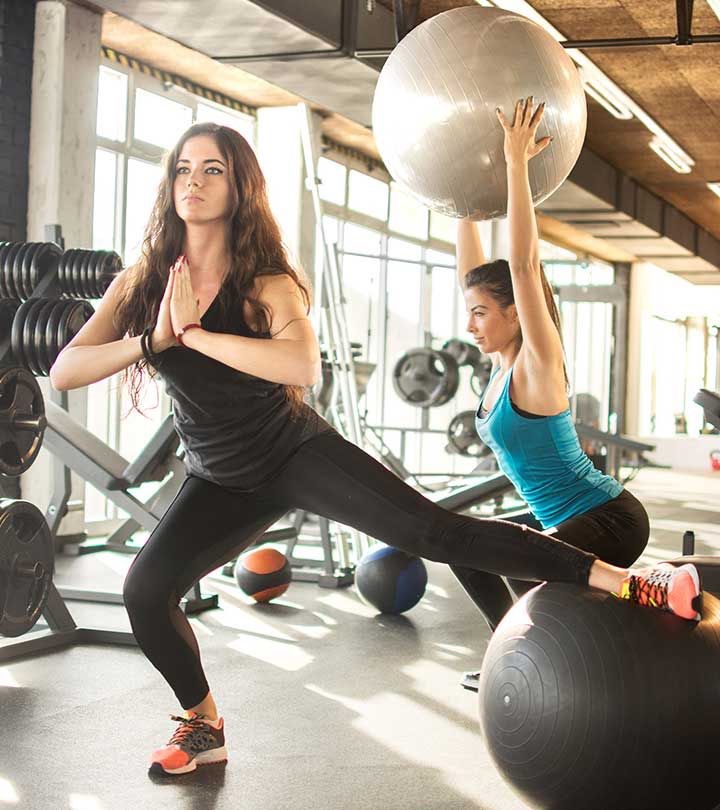
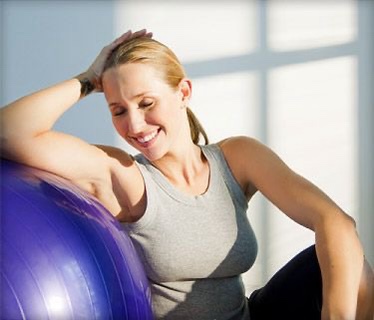
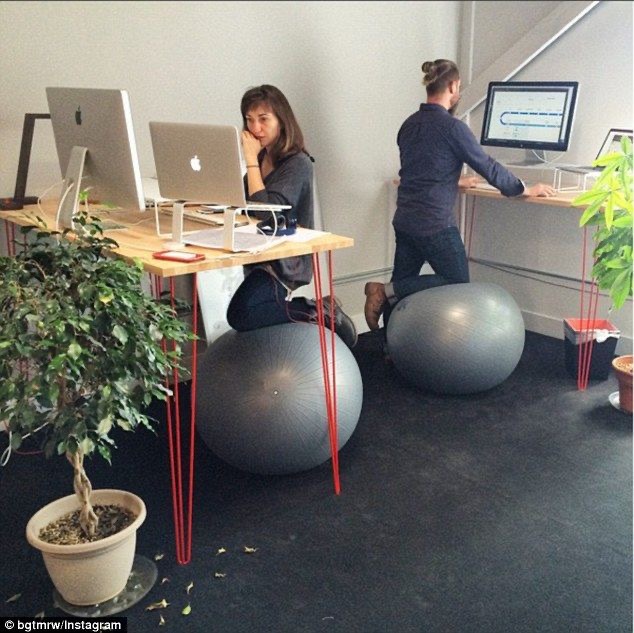
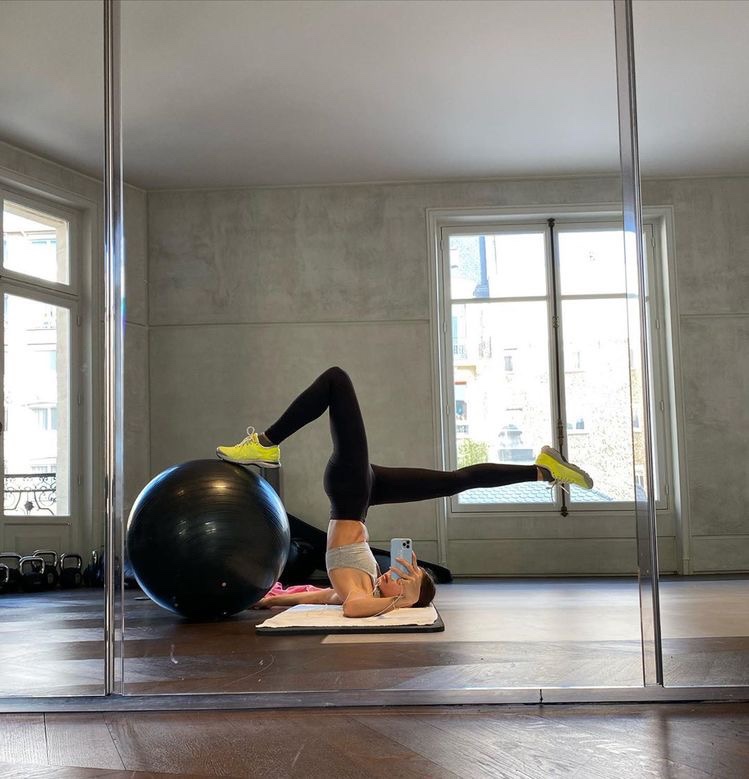
A Multitude of Benefits of the Exercise Ball Workouts
Exercise ball workouts offer benefits beyond the physical. The mental aspect of exercising on an unstable surface promotes focus, concentration, and mind-body connection. As individuals strive to maintain balance, they become more attuned to their body’s movements and sensations, fostering greater awareness of posture and alignment.
Exercise balls offer a wide range of benefits that contribute to overall physical fitness, well-being, and even mental focus. Here are some of the key advantages:
1. Core Strength and Stability:
Using an exercise ball requires constant engagement of your core muscles to maintain balance. This results in improved core strength and stability. The instability of the ball forces deeper muscles to activate, leading to a stronger and more functional core.
2. Muscle Engagement
Exercise balls engage multiple muscle groups simultaneously due to their unstable surface. Along with the core, muscles in the legs, back, and even upper body are involved in maintaining balance during exercises, leading to a comprehensive full-body workout.
3. Posture Improvement
Sitting on an exercise ball promotes proper posture. As you balance on the ball, your spine naturally aligns, helping to prevent slouching and the associated back pain often linked to prolonged sitting.
4. Flexibility Enhancement
Incorporating exercise ball stretches into your routine can enhance flexibility. The ball allows you to perform stretches that might be challenging on a stable surface, enabling deeper and more effective stretches.
5. Low-Impact Workouts
The gentle bounce and cushioning effect of the exercise ball create a low-impact workout environment. This is especially beneficial for individuals with joint issues or those recovering from injuries, as it reduces strain on the body.
6. Balance and Coordination
The unstable nature of the exercise ball challenges your balance and coordination. Regular use can improve proprioception (awareness of body position) and fine-tune your ability to stabilize yourself in various situations.
7. Variety in Workouts
Exercise balls introduce a fun and creative element to workouts. There’s a wide range of exercises you can perform, from traditional strength training moves to more innovative exercises that target different muscle groups and movement patterns.
8. Mind-Body Connection
Using an exercise ball requires concentration and focus to maintain stability. This cultivates a stronger mind-body connection, helping you become more attuned to your body’s movements and sensations.
9. Rehabilitation and Injury Prevention
Physical therapists often use exercise balls for rehabilitation purposes. The controlled instability can aid in the recovery process by gently building strength and flexibility, while reducing the risk of exacerbating existing injuries.
10. Versatility
Exercise balls can be integrated into various fitness routines, making them suitable for people of different fitness levels and age groups. They can be used for strength training, stretching, yoga, Pilates, and even as an alternative to a desk chair for active sitting.
11. Fun and Engagement
The playful nature of exercise ball workouts can make exercising more enjoyable. Bouncing, rolling, and balancing add an element of play to your fitness routine, motivating you to stay consistent.
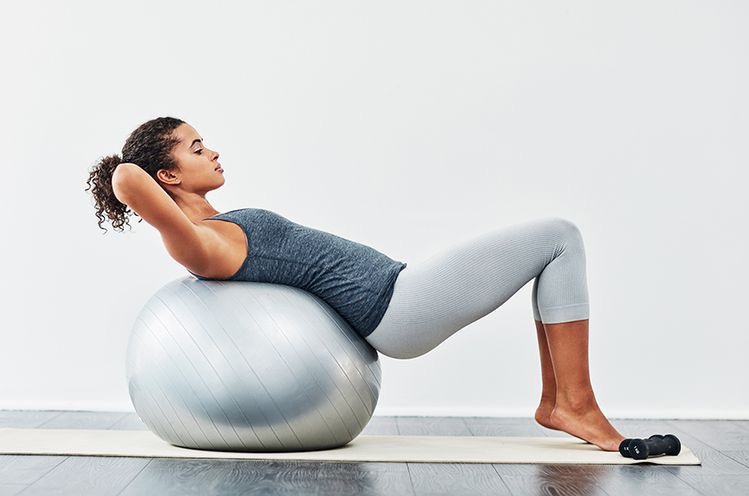
Exercise Ball Workouts
Exercise balls can be used to perform a wide variety of exercises that target different muscle groups and fitness goals. Here are some popular exercise ball exercises to give you an idea of their versatility:
1. Plank with Ball Rollout:
- Start in a plank position with your forearms resting on the exercise ball.
- Roll the ball forward by extending your arms, keeping your core engaged.
- Roll the ball back to the starting position to complete one repetition.
- This exercise strengthens the core, shoulders, and chest while challenging stability.
2. Ball Squats:
- Stand with the exercise ball between your lower back and a wall.
- Lower your body into a squat position, keeping the ball pressed against the wall.
- Push through your heels to return to the starting position.
- Ball squats engage the legs, glutes, and core while promoting proper squat form.
3. Ball Bridge:
- Lie on your back with your feet on the exercise ball and arms at your sides.
- Lift your hips off the floor to create a straight line from your shoulders to your feet.
- Hold the bridge position, engaging your glutes and core, then lower back down.
- This exercise targets the glutes, hamstrings, and lower back.
4. Ball Hamstring Curl:
- Lie on your back with your heels on the exercise ball and arms at your sides.
- Lift your hips off the floor and roll the ball toward your glutes by bending your knees.
- Extend your legs to roll the ball back out, returning to the starting position.
- This exercise works the hamstrings and glutes.
5. Ball Wall Squats with Overhead Press:
- Stand with the exercise ball between your lower back and a wall.
- Lower into a squat while simultaneously raising your arms overhead.
- Press through your heels to stand up while lowering your arms.
- This exercise combines lower body work with an upper body press for a full-body workout.
6. Ball Russian Twists:
- Sit on the exercise ball with your feet flat on the floor.
- Lean back slightly and lift your feet off the ground.
- Hold a weight or medicine ball and twist your torso from side to side.
- This exercise targets the obliques and core muscles.
7. Ball Pike Rollout:
- Start in a plank position with your feet on the exercise ball.
- Roll the ball toward your hands by lifting your hips and bending at the waist.
- Roll the ball back to the starting position to complete one repetition.
- This exercise challenges the core and shoulders while promoting flexibility.
8. Ball Push-Ups:
- Place your hands on the exercise ball in a push-up position.
- Perform push-ups while maintaining balance on the ball.
- This variation of push-ups engages the chest, shoulders, and core.
9. Ball Leg Raises:
- Lie on your back with your legs extended and the exercise ball between your feet.
- Lift your legs and the ball towards the ceiling, engaging your core.
- Lower your legs back down without letting the ball touch the floor.
- This exercise targets the lower abdominals.
10. Ball Back Extension:
- Lie face down on the exercise ball with your feet against a wall for stability.
- Place your hands behind your head and lift your upper body off the ball.
- Lower your upper body back down to complete one repetition.
- This exercise strengthens the lower back muscles.
Calories Burned During an Exercise Ball Workouts
The number of calories burned during an exercise ball workout depends on various factors, including your weight, the intensity of the exercises, the duration of the workout, and your overall fitness level. Generally, exercise ball workouts can be considered moderate-intensity exercises, which can contribute to calorie burning.
Here’s an estimate of the calories burned during a 30-minute exercise ball workout for a person weighing around 155 pounds (70.3 kg) for different exercises:
- Ball Squats: Approximately 100-150 calories
- Ball Bridge: Approximately 80-120 calories
- Ball Russian Twists: Approximately 70-100 calories
- Ball Wall Squats: Approximately 100-150 calories
- Ball Leg Raises: Approximately 80-120 calories
- Plank with Ball Rollout: Approximately 90-130 calories
These are rough estimates and can vary based on individual factors. If you’re performing a complete workout routine that includes a variety of exercises, you can expect to burn around 250-400 calories during a 30-minute session. Remember that the calorie burn can increase if you increase the intensity of the exercises, incorporate cardio intervals, or extend the duration of the workout.
Discovering New Horizons
As we delve deeper into the realm of fitness and explore the wonders of exercise balls, it’s essential to acknowledge that our journey doesn’t end here. While the exercise ball has captured our attention with its dynamic and engaging workouts, there’s another player in the field that deserves our recognition: the medicine ball.
Much like the exercise ball, medicine balls have carved out their own space in the fitness landscape, offering a unique set of benefits and workout possibilities. These weighted balls, available in various sizes and weights, provide a versatile tool for strength training, core work, and functional exercises.
Read more about medicine balls!

Choosing the right exercise ball
Choosing the right exercise ball (also known as a stability ball or Swiss ball) is important to ensure comfort, safety, and effectiveness during your workouts. Here’s a step-by-step guide to help you select the right ball for your needs:
1. Determine Your Size:
The right size of the exercise ball depends on your height. When sitting on the ball, your knees should be at a 90-degree angle, with your thighs parallel to the ground. Here’s a general guideline:
- If you’re under 5’0″ (152 cm), choose a ball with a diameter of 45 cm.
- If you’re 5’1″ to 5’7″ (155-170 cm), opt for a ball with a diameter of 55 cm.
- If you’re 5’8″ to 6’2″ (173-188 cm), go for a ball with a diameter of 65 cm.
- If you’re over 6’3″ (191 cm), choose a ball with a diameter of 75 cm.
2. Weight Capacity:
Check the weight capacity of the exercise ball. Make sure it can support your weight comfortably. Most standard exercise balls can support weights ranging from 250 to 300 pounds (113 to 136 kg).
3. Quality and Material:
Choose an exercise ball made of high-quality, anti-burst material. This means that if the ball gets punctured, it will deflate slowly rather than bursting abruptly. Look for balls that are labeled as anti-burst and made from durable PVC material.
4. Texture:
Opt for a ball with a slightly textured or non-slip surface. This helps provide better grip, stability, and prevents slipping during exercises.
5. Inflation and Deflation:
Make sure the exercise ball comes with a pump or is easily compatible with standard air pumps. Some balls come with their own inflation instructions. It’s important to be able to inflate and deflate the ball easily for adjustments.
6. Purpose:
Consider the types of exercises you’ll be doing on the ball. If you’re using it for sitting at a desk, a slightly larger ball might offer better stability. If you’re planning for more dynamic exercises, a smaller ball might be more appropriate.
Here are our personal picks for Exercise Balls based on all the factors we discussed:
(Click on the photo to open the link)
Embrace the Bounce Towards a Healthier You
As we conclude our exploration of exercise ball workouts, one thing is clear: the humble exercise ball is a remarkable tool that offers a gateway to a more active, balanced, and healthier lifestyle. From the moment we roll onto its surface, we embark on a journey that challenges our body, engages our mind, and transforms our approach to fitness.
Remember, the journey is yours to shape, and the exercise ball is your trusted companion. Whether you’re shaping up in the comfort of your living room, a bustling gym, or even the great outdoors, let the exercise ball be your partner in progress. With dedication, consistency, and a sprinkle of fun, the exercise ball will continue to be a valuable tool that propels us towards a healthier, more active, and more balanced life.
So, bounce, balance, and roll on, for every movement is a step towards vitality, every rep a celebration of strength, and every day an opportunity to embrace the boundless benefits that the exercise ball brings to our lives.







